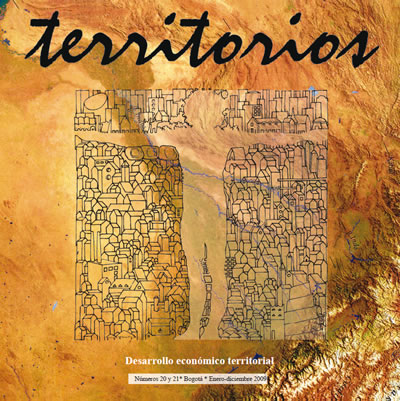Características del proceso de generación y difusión del conocimiento tecnológico en dos distritos industriales del sector textil-confecciones
Barra lateral del artículo
Contenido principal del artículo
El presente trabajo tiene como finalidad analizar las características de generación y difusión del conocimiento en distintos distritos industriales o aquéllos dedicados a la industria de la confección. Se analizan dos distritos textiles localizados en las ciudades de Pergamino y Mar del Plata (Provincia de Buenos Aires, Argentina). Ellos poseen una importante masa crítica de talleres de confección ligados a empresas con marca y diseño propio, cuya localización dentro o fuera de los límites de la ciudad varía en ambos casos. La metodología de investigación es cuantitativa y de tipo descriptivo. Los resultados muestran que Pergamino ha construido una base más sólida de conocimiento que Mar del Plata, proveniente de diferentes orígenes y sendero evolutivo. Ello incide, como un círculo virtuoso, sobre el conocimiento arquitectural de las empresas y sobre sus estrategias empresariales. Sin embargo, si bien en Pergamino existe un flujo constante de saberes tecnológicos externos que permiten crear una base más elevada de conocimiento de las firmas, que se difunde en el distrito, no se vislumbra el surgimiento de nuevas empresas locales con marca y diseño. De esta manera persiste un tipo de organización donde las firmas núcleo,en su mayoría externas al territorio, son las que traccionan el dinamismo de la trama.
The aim of this paper is to analyze the patterns of knowledge creation and diffusion in two textile industrial districts located in the Argentinean cities of Mar del Plata and Pergamino. Both of them have an important number of supplier manufacturing firms linked to fashion- oriented clothing subcontractors, which are located inside or outside the geographical boundaries of each city. The methodology research is quantitative and descriptive. The results show that Pergamino has developed over time a stronger knowledge base than Mar del Plata, which could be related to different historical circumstances and evolutionary paths. This has an importante effect on firms’ architectural knowledge and strategies. Even though in Pergamino there is a permanent flow of external technological know how, which increase its knowledge base and let the firms belonging to the cluster to share it, there is not new fashion-oriented clothing local firms, prevailing a type of industrial district where the dynamism of the economy depends on the hub firms located outside the local context.
Descargas
Albino, V., Alvarez, F. y Giannoccaro, I. (2005). Mimeo. Cognitive externalities in a geographic cluster: an agent-based simulation study, DIMEG, Politecnico di Bari,
Breschi, S., Malerba, F. y Orsenigo, L. (2000). Technological regimes and schumpeterian patterns of innovation, The Econonomic Journal, 110, 388-410.
Breschi, S., Lissoni, F. y Malerba, F. (2003). Knowledge-relatedness in firm technological diversification, Research Policy, 32, 69-87.
Burachik, G. (2000). Cambio tecnológico y dinámica industrial en América Latina, Revista de la CEPAL, 17, 85-104.
Castellacci, F. (2007). Technological regimes and sectoral differences in productivity grow, Industrial and corporate change, 16 (6), 1105-1145.
Castellacci, F. (2008). Methodological paradigms, regimes and trajectories: Manufacturing and service industries in a new taxonomy of sectoral patterns of innovation, Research Policy, doi: 10.1016/j.respol.2008.03.11
Ernst, D. y Lundvall, B. (1996). Information technology in the learning economy: Challenges for developing countries, DRUID Working Paper, 97-12
Giuliani, E. (2006). Networks and heterogeneous performance of cluster firms, Papers in Evolutionary Economic Geography, (PEEG), Utrecht University.
Guerrieri, P. y Pietrobelli, C. (2006). Old and new forms of clustering and production networks in changing technological regimes: Contrasting evidence from Taiwan and Italy, Science Technology & Society, 11 (9), 9-37.
Howells, J. (2002). Tacit knowledge, innovation and economic geography, Urban Studies, p. 39.
Malerba, F. y Orsenigo, L. (1997). Technological regimes and sectoral patterns of innovative activities, Industrial and Corporate Change, 6 (1), 83-117.
Markusen, A. (1996). Sticky Places in Slippery Space: A Typology of Industrial Districts, Economic Geography, Vol. 72.
Marshall, A. (1920). Principles of Economics. London: Mc Millan.
Nelson, R. y Winter, S. (1997). In search of useful theory of innovation, Research Policy, 6 (1), 36-76.
Nelson, R. y Winter, S. (1982). An evolutionary theory of economic change. Cambridge, MA: Harvard University Press.
Pavitt, K. (1984). Sectoral patterns of technical change: Towards a taxonomy and a theory, Research Policy, 13, 343-373.
Silva, D., Becerra, P., Jauré, F., Yoguel, G. y Milesi, D. (2008). Mimeo. Abriendo la caja negra de diseño: la importancia de los procesos de innovación en confecciones, UNGS.
Tallman, S., Jenkins, M., Henry, N. y Pinch, S. (2004). Knowledge, clusters and competitive advantage, Academy of Management Review, 29 (2), 258-271.
Winter, S. (1986). Shumpeterian competition in alternative technological regimes. En R. Day y G. Eliasson (Comp), The dynamics of market economies. Amsterdam: Elsevier Science Publishers.
Detalles del artículo
Los autores conservan los derechos de autor y garantizan a la revista el derecho de ser la primera publicación del trabajo al igual que licenciado bajo una Creative Commons Attribution License que permite a otros compartir el trabajo con un reconocimiento de la autoría del trabajo y la publicación inicial en esta revista.
La revista no cobra cargos por publicar a los autores por el proceso de edición de los artículos.



